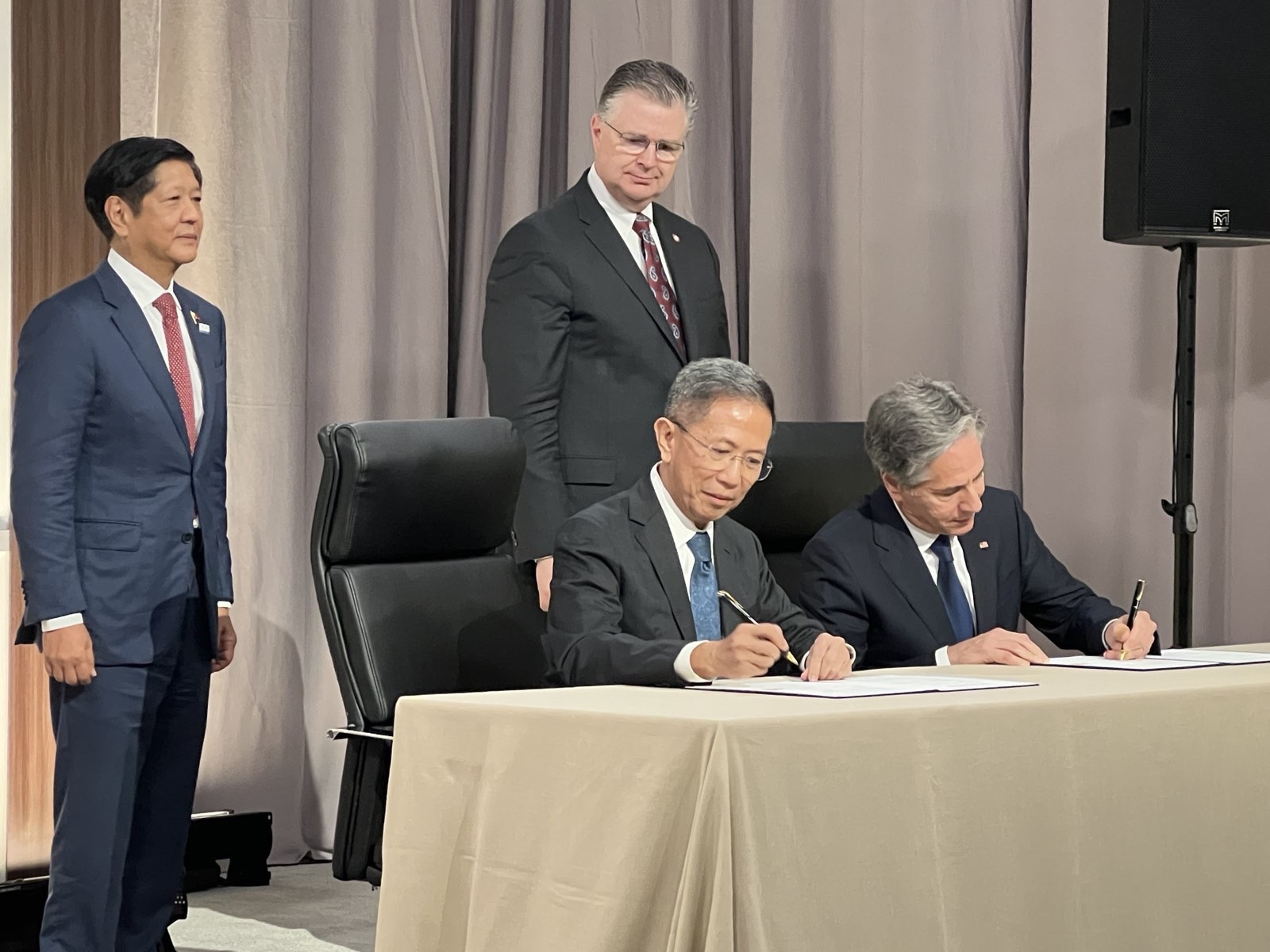At A Glance
- The 123 agreement is anchored on the provisions of Section 123 of the US Atomic Energy Act which promotes peaceful nuclear cooperation; and will enable partner-country like the Philippines to have access on nuclear technologies as well as equipment being supplied by American companies.<br>For the US to enter into '123 agreement' for nuclear, the partner-country is required to "adhere to a set of strong nonproliferation requirements," which is also in line with the Treaty on the Non-Proliferation of Nuclear Weapons.
The much-awaited and historic ‘123 Agreement’ on nuclear power cooperation was finally signed between Philippine Energy Secretary Raphael P. M. Lotilla and United States Secretary of State Anthony Blinken, the Department of Energy (DOE) has announced.

The signing was witnessed by President Ferdinand Marcos Jr., and it was formally executed on Thursday (Nov. 16) in San Francisco, California on the sidelines of the ongoing Asia Pacific Economic Cooperation (APEC) Leaders’ Summit.
Lotilla has been signatory on the Philippine side, based on his capacity as chairman of the Nuclear Energy Program Inter-Agency Committee (NEP-IAC), or the government agency that has been evaluating and assessing the viability of nuclear power as part of the country’s long term energy future.
The 123 agreement is anchored on the provisions of Section 123 of the US Atomic Energy Act which promotes peaceful nuclear cooperation; and will enable partner-country like the Philippines to have access on nuclear technologies as well as equipment being supplied by American companies.
Apart from technology access, the deal will facilitate collaboration between the US and the Philippines on the sphere of technological exchanges, scientific research as well as initiatives on ensuring the safe operations of nuclear power installations.
For the US to enter into ‘123 agreement’ for nuclear, the partner-country is required to “adhere to a set of strong nonproliferation requirements,” which is also in line with the Treaty on the Non-Proliferation of Nuclear Weapons.
Negotiations on the terms of the 123 nuclear pact had been fleshed out and worked on with the US State Department, with technical assistance and concurrence by the US Department of Energy’s National Nuclear Security Administration (DOE/NNSA) and in collaboration with the US Nuclear Regulatory Administration.
The interest of Filipino investors is to partner with American firms like NuScale Power Corporation and Ultra Safe Nuclear Corp. on the targeted deployment of small modular reactors (SMR) as well as micro-modular reactors (MMR) which are touted as next-generation technologies that may have their commercial debut in energy markets beyond 2030.
To date, there are more than 80 designs of SMRs that are under development globally – these configurations are the water-cooled reactor, sodium-cooled fast reactor (SFR), high temperature gas-cooled reactor (HTGR), gas-cooled fast reactor (GFR), molten salt reactor (MSR), lead-cooled fast reactor (LFR), the supercritical water-cooled reactor (SCWR) and the very high temperature reactor (VHTR), among others.
Technology suppliers and nuclear power project developers indicated that the major challenges hounding the commercial-scale rollout of SMRs and MMRs include concerns on supply chain, fuel supply, cost overruns as well as licensing that has already been moved to 2031-2032 timeframes from the original target of 2028-2029.
On SMR rollout, in particular, it was emphasized that the early snags on project developments delve with viability and performance of key reactor features, that in part, are linked to fuel and materials behavior as well as adequacy of passive safety systems.
For the Philippines, the Department of Energy (DOE) is eyeing the integration of nuclear power into the country’s energy mix by 2032 starting at 1,200-megawatt capacity; then it will be ramped up to 2,400MW by 2035; and 4,800MW by 2050.
Critical part of the country’s to-do list is to hurdle the 19 infrastructure development conditions set out by the International Atomic Energy Agency (IAEA) – the first step of which is to come up with a study that shall serve as a basis for the national position on the nuclear option – and so far, that has already been addressed partly in the past administration.
However, the warranted feasibility study is missing or had not been firmed up, hence, there is no specific document that the Marcos administration can now lean on for it to take the next steps in cementing the country’s nuclear ambitions.
On top of that, the other major deliverables will be those on nuclear safety, management, funding and financing, legislative framework, safeguards, firming up regulatory toolboxes, radiation protection, and reliability of the electrical grid.
The others revolve around human resources development, stakeholder involvement for social acceptance; concerns on siting and supporting facilities, environmental protection, emergency planning, security and physical protection, nuclear fuel cycle and radioactive waste management; as well as industrial involvement and procurement.
And with the Fukushima tragedy of 2011, energy markets with nuclear power assets are likewise stepping up on installing redundancy protection equipment on their facilities.
Nuclear energy has always been viewed by the DOE as a long-term game plan for power generation; but it is also acknowledging the tough challenges the energy sector will need to overcome, including the perpetual predicament of elusive social acceptance.
Even with the revived interest on nuclear, the country is being cautioned that there is really no short cut when it comes to this technology rollout and that project implementations take long lead times of 15 years or more compared to other energy technologies.
Absent yet a firm outcome from a study, another major dilemma the government has to resolve is on which sector should take the investing initiative – if it would still be possible for the State to build a nuclear plant or to extend government guarantees on financing; or if it would be more viable to leave the capital infusion call to the private players.